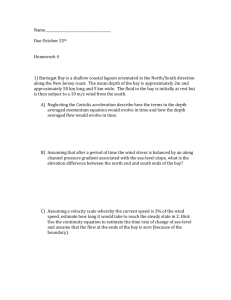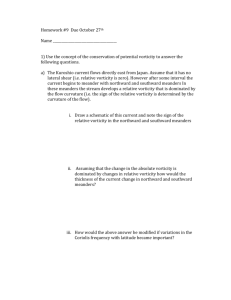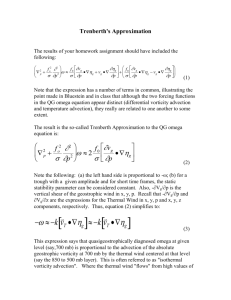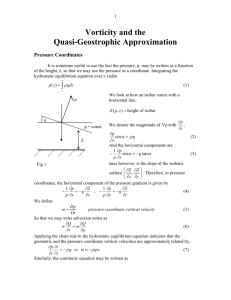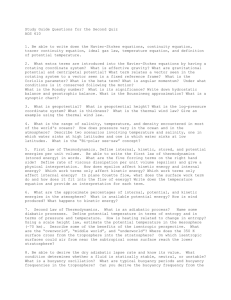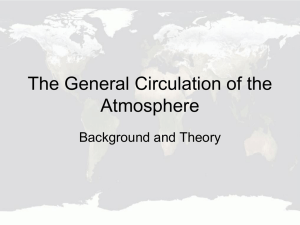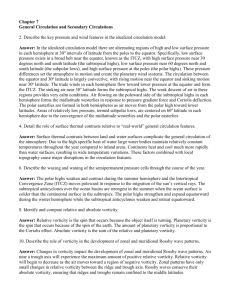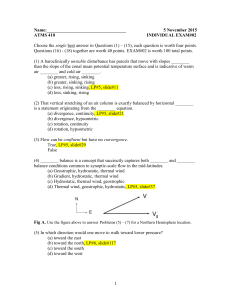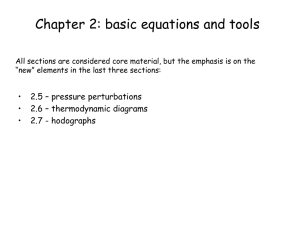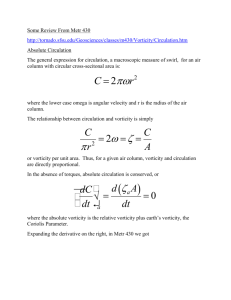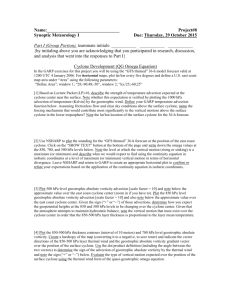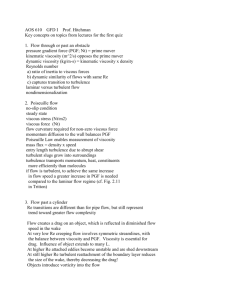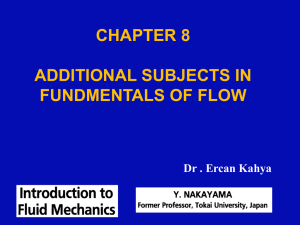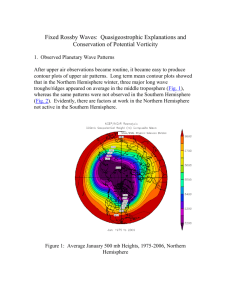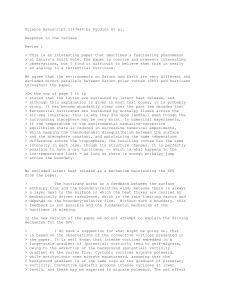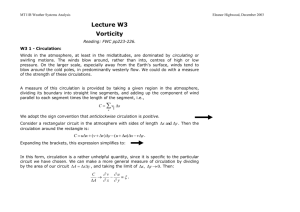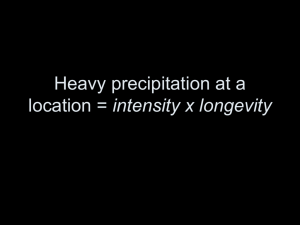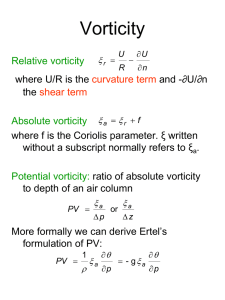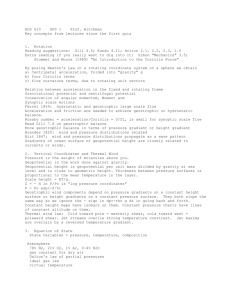S10 Estimating vorticity
advertisement
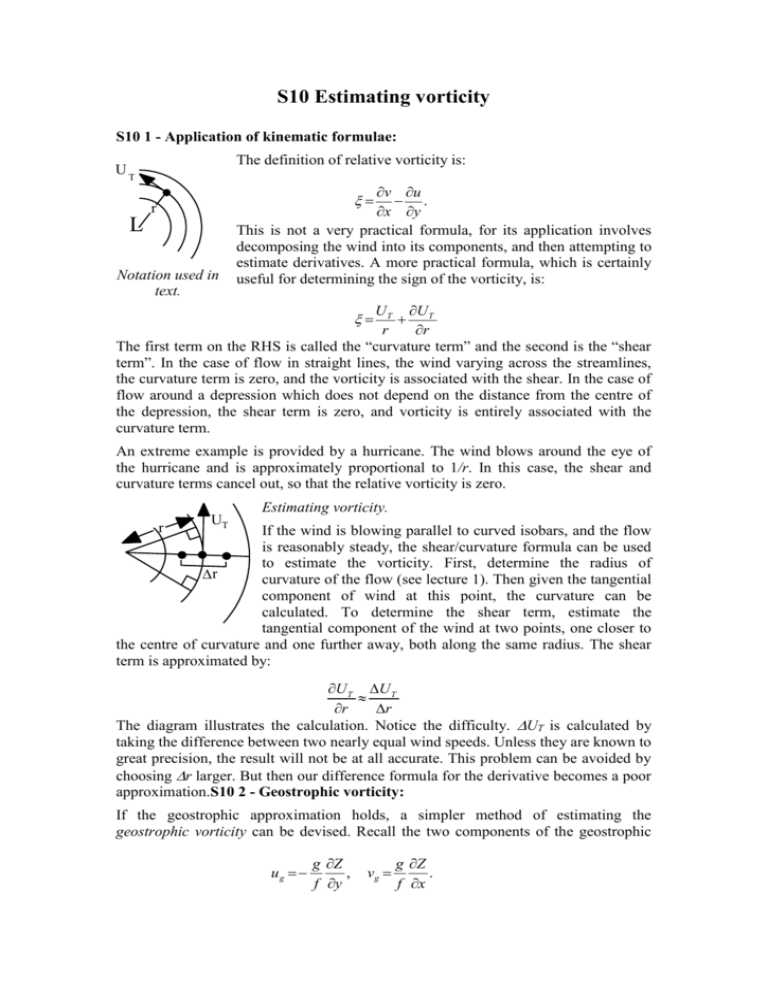
S10 Estimating vorticity S10 1 - Application of kinematic formulae: The definition of relative vorticity is: UT v u . x y This is not a very practical formula, for its application involves decomposing the wind into its components, and then attempting to estimate derivatives. A more practical formula, which is certainly useful for determining the sign of the vorticity, is: r L Notation used in text. U T U T r r The first term on the RHS is called the “curvature term” and the second is the “shear term”. In the case of flow in straight lines, the wind varying across the streamlines, the curvature term is zero, and the vorticity is associated with the shear. In the case of flow around a depression which does not depend on the distance from the centre of the depression, the shear term is zero, and vorticity is entirely associated with the curvature term. An extreme example is provided by a hurricane. The wind blows around the eye of the hurricane and is approximately proportional to 1/r. In this case, the shear and curvature terms cancel out, so that the relative vorticity is zero. r UT Estimating vorticity. If the wind is blowing parallel to curved isobars, and the flow is reasonably steady, the shear/curvature formula can be used to estimate the vorticity. First, determine the radius of r curvature of the flow (see lecture 1). Then given the tangential component of wind at this point, the curvature can be calculated. To determine the shear term, estimate the tangential component of the wind at two points, one closer to the centre of curvature and one further away, both along the same radius. The shear term is approximated by: U T U T r r The diagram illustrates the calculation. Notice the difficulty. UT is calculated by taking the difference between two nearly equal wind speeds. Unless they are known to great precision, the result will not be at all accurate. This problem can be avoided by choosing r larger. But then our difference formula for the derivative becomes a poor approximation.S10 2 - Geostrophic vorticity: If the geostrophic approximation holds, a simpler method of estimating the geostrophic vorticity can be devised. Recall the two components of the geostrophic ug g Z , f y vg g Z . f x wind: Substitute into the formula for relative vorticity: g g 2Z 2Z g 2 Z f x 2 y 2 f A vorticity cross. Z2 x Z3 Z0 Z1 x Z4 In fact, a simple finite difference formula exists which can be used to estimate the Laplacian of the height field. Imagine a square cross whose arms are x long. Then: Z Z 2 Z 3 Z 4 4Z 0 2Z 1 x 2 and so the geostrophic vorticity can be written: g g Z1 Z 2 Z 3 Z 4 4Z 0 f x 2 Of course, there is still the problem of subtracting two large, comparable numbers, which makes even this estimation of vorticity inaccurate. But the computational labour is a lot less than using the kinematic formulae.

